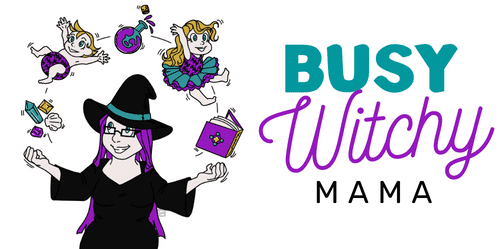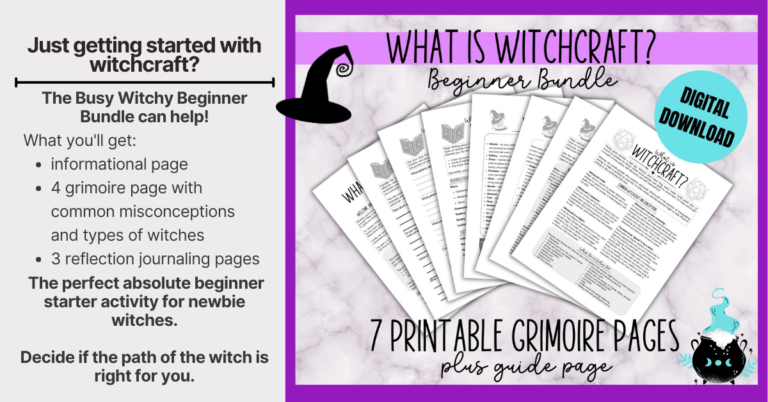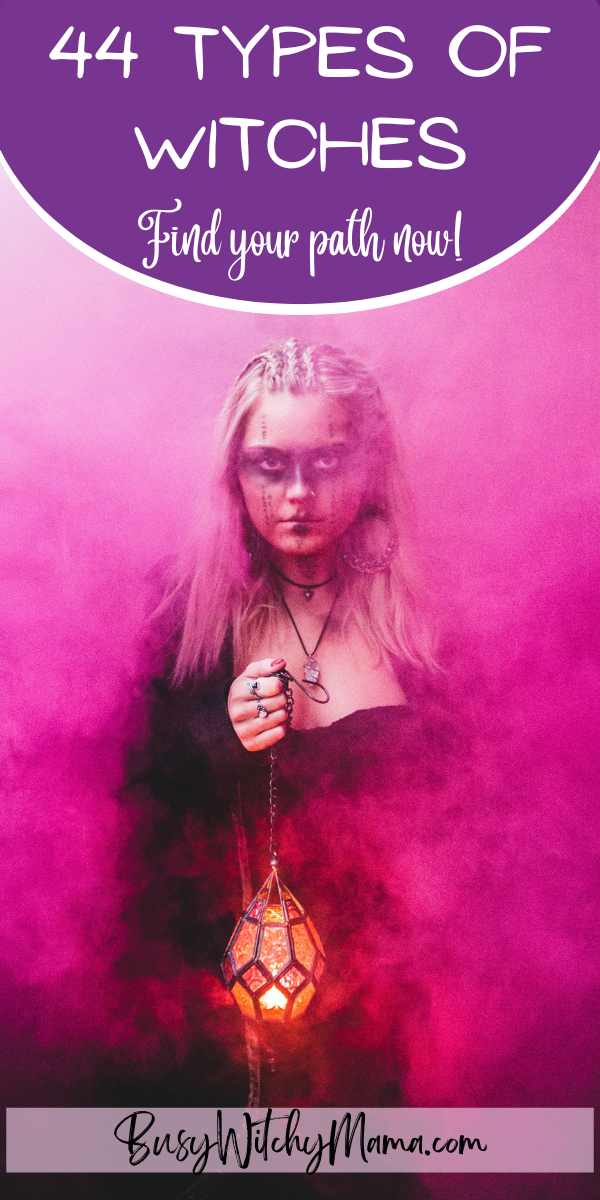
One of my favorite things about witchcraft is also one of the most stressful for new witches. There are seemingly endless types of witches and limitless flexibility. Unfortunately, this can make you feel pressured to commit to a type.
You don’t have to choose a type in order to learn. However, deciding to practice as one or more of these types of witches can help give you some structure, a set of rules, or more freedom to build your own path. It all depends on what you need most from your practice!
Use this list as a guide to help you further choose what you want to get out of witchcraft. It’s certainly not comprehensive but should help provide ideas for what you’d like to explore further. Remember, you don’t have to choose a path, and you have the freedom to decided if multiple types of witches appeal to you.
Busy Witchy Mama is a participant in the Amazon Services LLC Associates Program, an affiliate advertising program designed to provide a means for sites to earn advertising fees by advertising and linking to Amazon.com. This post may contain affiliate links through Amazon or other affiliate programs. If you choose to make a purchase through an affiliate link, I make a small commission at no additional cost to you. All opinions are my own and I only recommend products that I believe in. Read my full disclosure here. Thank you for your support!
Get all this info as a grimoire page with a corresponding journal workbook to help you analyze your learning and build your magical book.
Table of Contents
ToggleIs Witchcraft a Religion
No, witchcraft is not a stand alone religion. You don’t have to commit to a certain path, worship a god, or initiate into any specific path to practice witchcraft.
Witchcraft is simply the practice of manipulating energy to accomplish an outcome, and witches are simply individuals who practice witchcraft. If you want to be a secular or atheistic witch, you can!
Some people find that they want more than just a practice or even a spiritual path. Luckily, a religious path is also an option. Actually, it’s more like a bunch of options.
As a matter of fact, you can even incorporate witchcraft into your current religious practice if you want. Faith is such a personal topic. You should feel free to do what works best for you!
If you really want to make your head spin, there are also about a million different types of paganism that mesh well with a witchcraft practice.
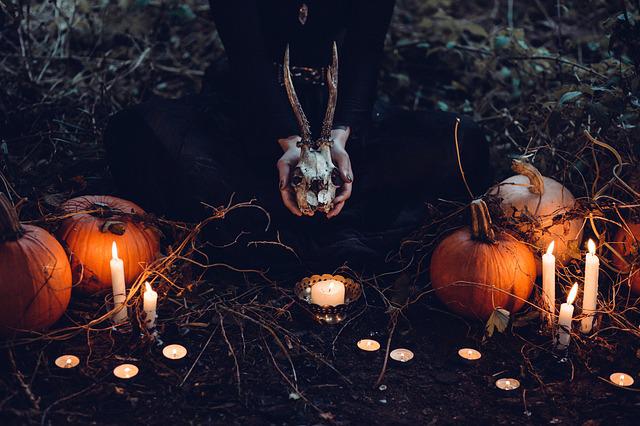
Religious Types of Witches
- Wicca – possibly the best know neopagan (that just means modern pagan!) religious path. Not all Wiccans use magic, but many do. Wicca is great if you crave community (it’s an enormously fast growing path), benefit from a sense of ritual, and like a practice with well established rules. You can further divide Wicca into three categories.
- Gardnerian – founded by Gerald Gardner in 1954. Practices include worship of a god and goddess, The Wiccan Rede (An it harm none, do as thou wilt). Follows a specific set of rituals and traditions and is very secretive about its members to protect them. Requires initiation and adheres to an established ethical code.
- Alexandrian – founded by Alex Sanders in the UK in the 1960s. This form has Gardnerian foundations but incorporates practices from other religions. Plus, it’s more supportive of an eclectic, fluid practice. Requires initiation.
- Dianic – a branch of Wicca that focuses primarily on the feminine and worship a main goddess that encompasses all goddesses. An eclectic framework loosely based on more traditional forms of Wicca. Some groups are female only, while others welcome all participants.
- Ceremonial – a very structured and secretive practice that includes a blend of older occult teachings such as Enochian magic, Thelema, and Kabbalah.
- Thelema – founded by Aleister Crowley. A blend of Egyptian and Ceremonial magic, but with less structure and not as secretive.
- Druidry – lots of variation between groups, but generally include ancestor veneration, pre-Christian deity, and a deep respect for the natural environment.
- Luciferian – witches who worship Lucifer as the Morningstar and bringer of light.
Cultural Types of Witches
While these practices are not all closed, they should be respected! I’ve personally found the spirits of some cultural types of witchcraft to be very accepting of outsiders, while others express firm boundaries of an ancestral tie.
If you’re interested in exploring cultural types of witchcraft outside your own ancestry, be respectful and listen openly. You might hear a hard no, so it would be better to learn and honor rather than practice.
If I have misrepresented on of your cultural practices in this post, please let me know, so I can fix it.
- Celtic – witches who center their practice around the traditions and gods of Celtic cultures such as pre-Christian Ireland, Whales, Britain, Scotland, Brittany, Cornwall, and the Isle of Man (possibly also Galicia, Spain which has been heavily influenced by Celtic culture). Druidry can also be part of Celtic witchcraft.
- Norse – witches who center their practice around the traditions and gods of pre-Christian Scandinavia. Shamanism is a common element of this practice.
- Hellenic – witches who center their practice around the traditions and gods of Ancient Greece. Includes elements of ancestor worship and animism.
- Root Worker – Conjurers utilizing the magical practices of Hoodoo. Includes elements of healing, mediumship, and divination. Hoodoo is considered a hereditary (and, many would argue, closed) practice with deep roots in slavery in the American south and incorporates elements of African spiritualism as well as Christianity.
- Bruja (female) or Brujo (male) – practitioner of magic related to South America, often with elements of cultural folk magic and Catholicism.
- Hereditary – witches who practice traditions handed down to them. This typically involves coming from a long line of witches who directly teach magic to their children. However, I think this can also include ancestral witches who learn the traditions and spells of their ancestors through meditation and ancestral spirit work.
- Folk – witches who rely on legends, traditions, and history to inform their practice. These types of witches often work with spirits from local traditions and employ magic that uses basic resources available to their region.
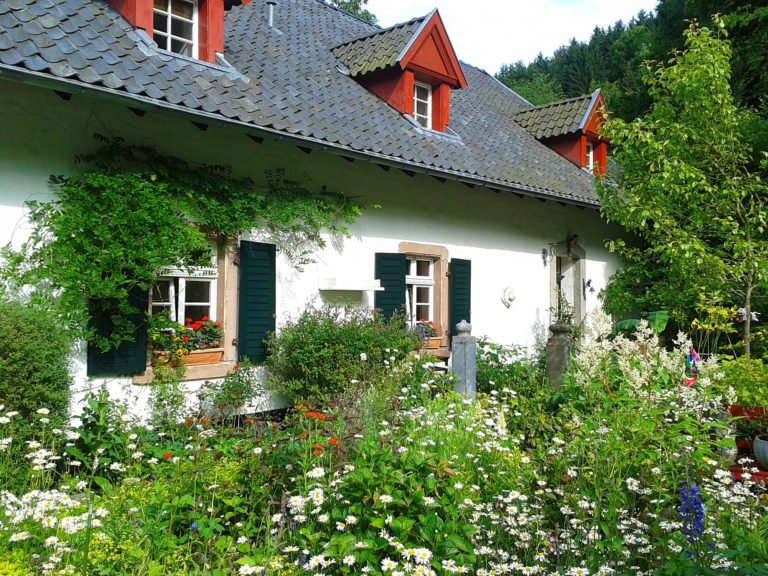
Types of Green Witches
These types of witches include traditions that rely on their surroundings, natural environments, and use of whatever is available to enhance their magic. They often include a focus on home, the natural world, and community.
- Hedge – hedge meaning boundary, hedge witches tend to practice lots of herbal and healing magic. They also do a lot of work between the spirit and mundane worlds. There’s an element of shamanism to hedge witchery and the use of trance inducing herbs and astral projection.
- Green – witches who focus on magic that utilizes plants, herbs, and nature.
- Hearth – sometimes called cottage witches, these types of witches whose magic revolves around the home and household duties.
- Kitchen – witches who infuse magic into cooking and household duties. Instead of traditional tools, kitchen witches make magic with everyday kitchen tools and appliances.
Nature Based Witches
These types of witches find that they have a preference for or stronger ability in one or more of these natural elements.
Many witches incorporate a variety of these elements into their practice.
- Cosmic – witches who tap into the energy of the planets, the cosmos, astrology, and astronomy to empower their magic.
- Elemental – witches who use one or more of the elements to strengthen their magic – earth, air, fire, water, and spirit.
- Faery – witches who work with the energy of the Fae or Fairies.
- Lunar – witches who work with the energy and cycles of the moon.
- Solar – witches who use the energy of the sun.
- Sea – witches who use energy from the plants, animals, and spirits of the sea and other bodies of water to strengthen their magic.
- Swamp – witches who use energy from the plants, animals, and spirits of swamps to strengthen their magic and tend to prefer solitude over community.
- Storm – witches who can tap in to the power of storms and the weather to boost their magic.
- Crystal – witches who use the energy of rocks and crystals in their magic.
- Forest – witches who use energy from the plants, animals, and spirits of the forests to strengthen their magic.
- Desert – witches who use energy from the plants, animals, and spirits of the deserts to strengthen their magic.

More Types of Witches
- Eclectic – as many different practices as there are eclectic witches. These types of witches build their own practice by exploring a variety of types of witchcraft and incorporating elements that feel right to that particular witch.
- Solitary – witches who practice their craft alone without the support of a coven.
- Chaos – witches who draw power from chaos and disharmony, such as after a fight, severe weather, political upheaval, or any event that causes strong, unstable emotions, and usually also include cursing, hexing, and jinxing.
- Divination– witches who practice divination as a part of their practice and might include tarot, oracle cards, pendulums, spirit boards, scrying, meditation, tesseomancy, bibliomancy, runes, and much more.
- Urban – witches who live in urban environments and strengthen their magic with the hustle and bustle of big cities and small living spaces.
- Secular – witches whose practice is entirely non religious and does not include spirits or deity, even if they are indeed religious individuals.
- Shamanic – witches who use an altered state of consciousness to guide their practice.
- Tech – witches who infuse modern technology and pop culture references into their practice.
- Music – witches who take inspiration from their favorite music in their witchcraft
- Shadow – witches who focus on shadow work. They use various exercises to transmute negative or traumatic personal shadows into empowering self acceptance and self love.
- Art – witches who practice witchcraft through various art mediums.
- Angel – witches who work with the energy of angels.
- Healer – witches who focus primarily on healing physical and spiritual ailments, often through herbal medicine, energy work, and Reiki.
- Satanic – witches who believe in the seven Satanic tenets and are strongly against dictatorial society, having nothing to do with the actual worship fo Satan.
A Note About Black, White, and Grey Witches
While there are many witches who still use the terms white, black, and grey witch in their practice, I haven’t included them in these lists intentionally.
The basic idea is that white witches practice good magic, black witches practice bad magic, and grey witches are somewhere in between. Can you see why this would be a problem? Claiming all things white to be good and all things black to be bad reinforces racial stereotypes that simply have no place in any community. Least of all the witchcraft community, which is chronically underrepresented and where cultural appropriation and negative stigma is still being fought.
I’m not a huge fan of generalizing any type of magic as inherently good or bad and certainly not based on black vs. white. You get to make choices about what types of magic you are comfortable with. It’s not necessarily the spell but the intent behind the working that makes it “good” or “evil”.
Which Types of Witches Appeal to You?
Remember, you don’t have to choose just one path or even any path at all. Choose what feels best for you where you are now. Our paths evolve and change, and you might find yourself choosing something different as you grow.
Did I miss any types of witches that should be included in this list? Let me know! Are you an expert in one of these types of witches? Do you have an established practice you’d like to share with the busy witchy community?
Reach out via my Contact Page about guest posting opportunities. I’m looking for passionate writers with first hand experience and perspective to guest post on my site about different types of witches and witchcraft!
